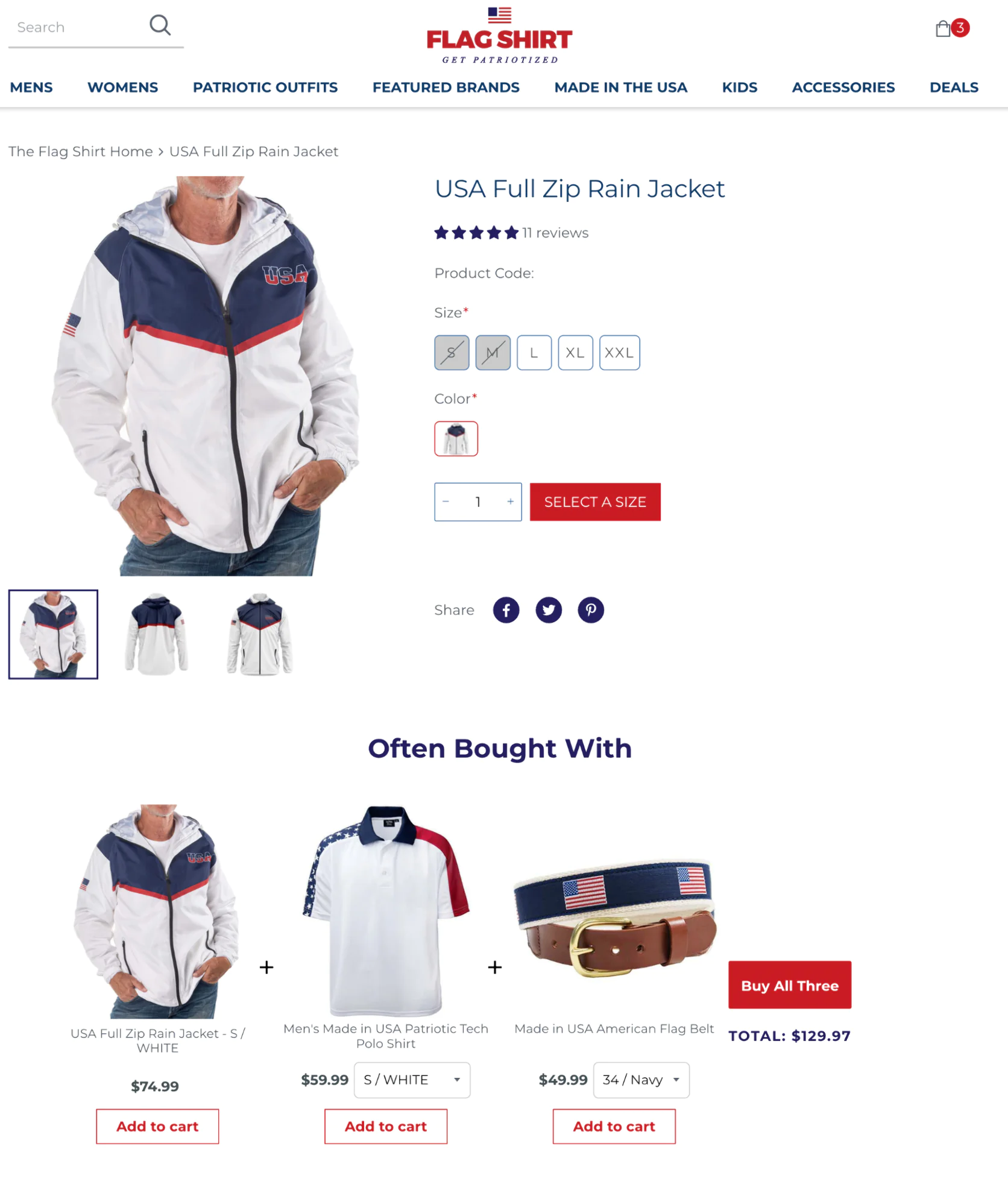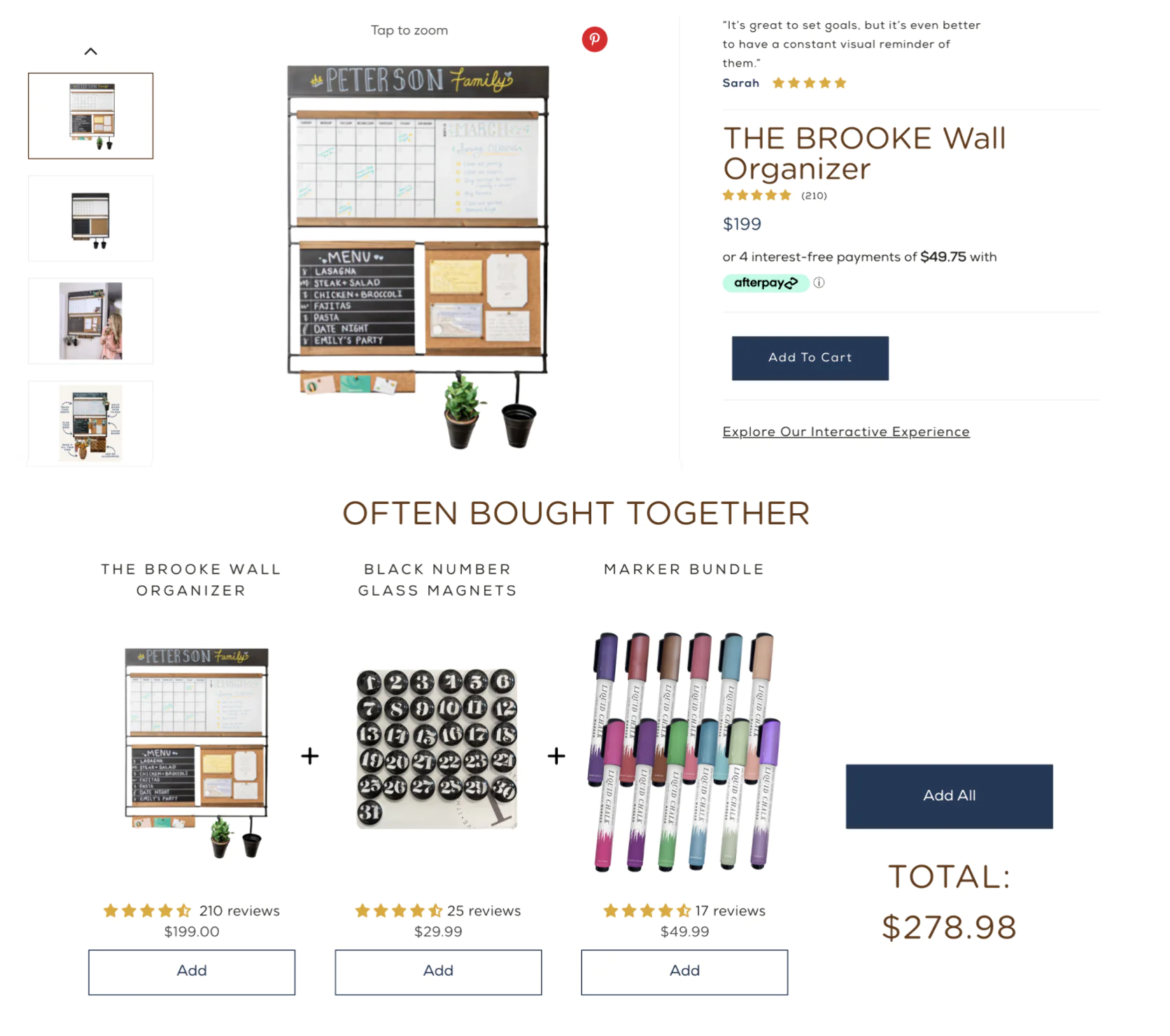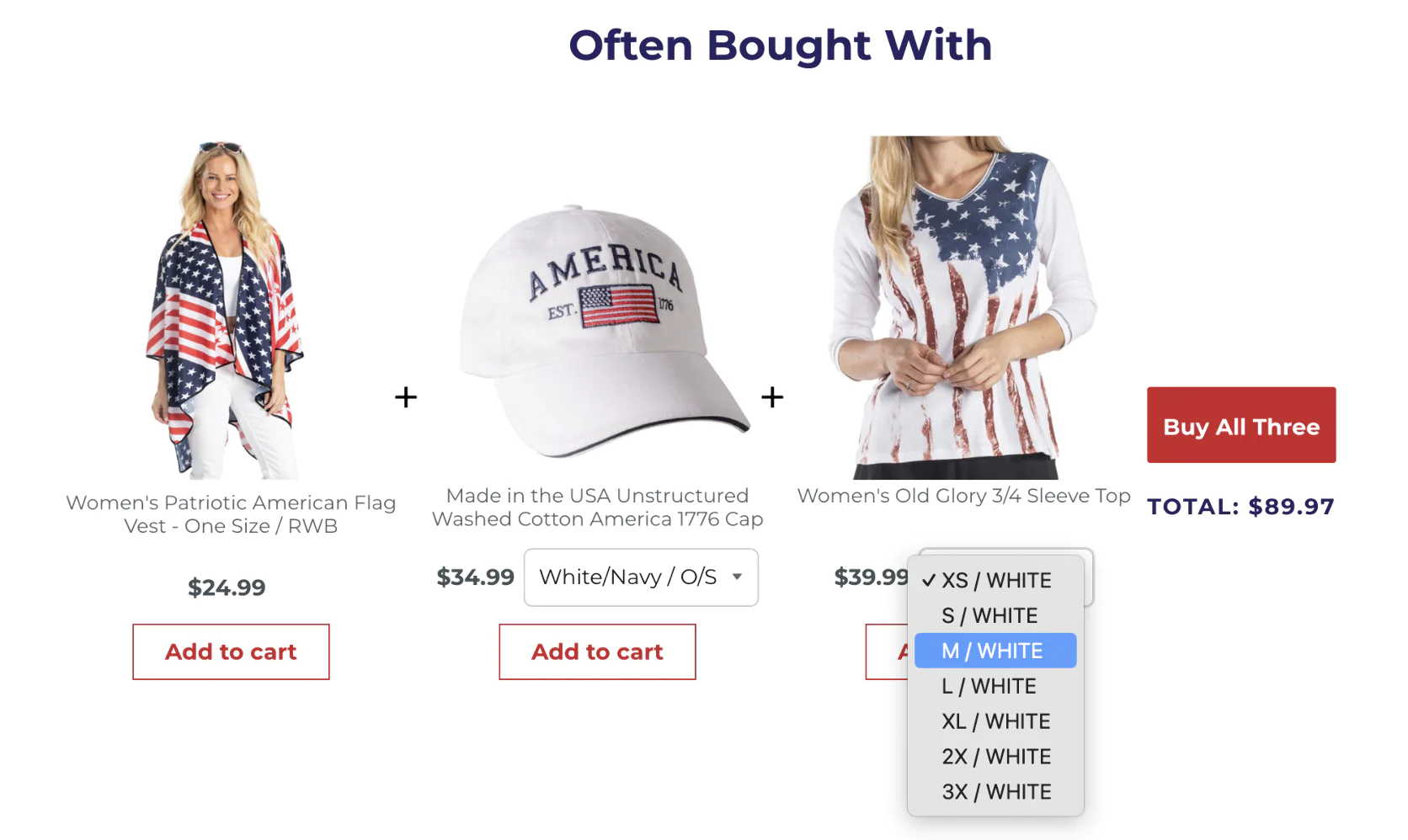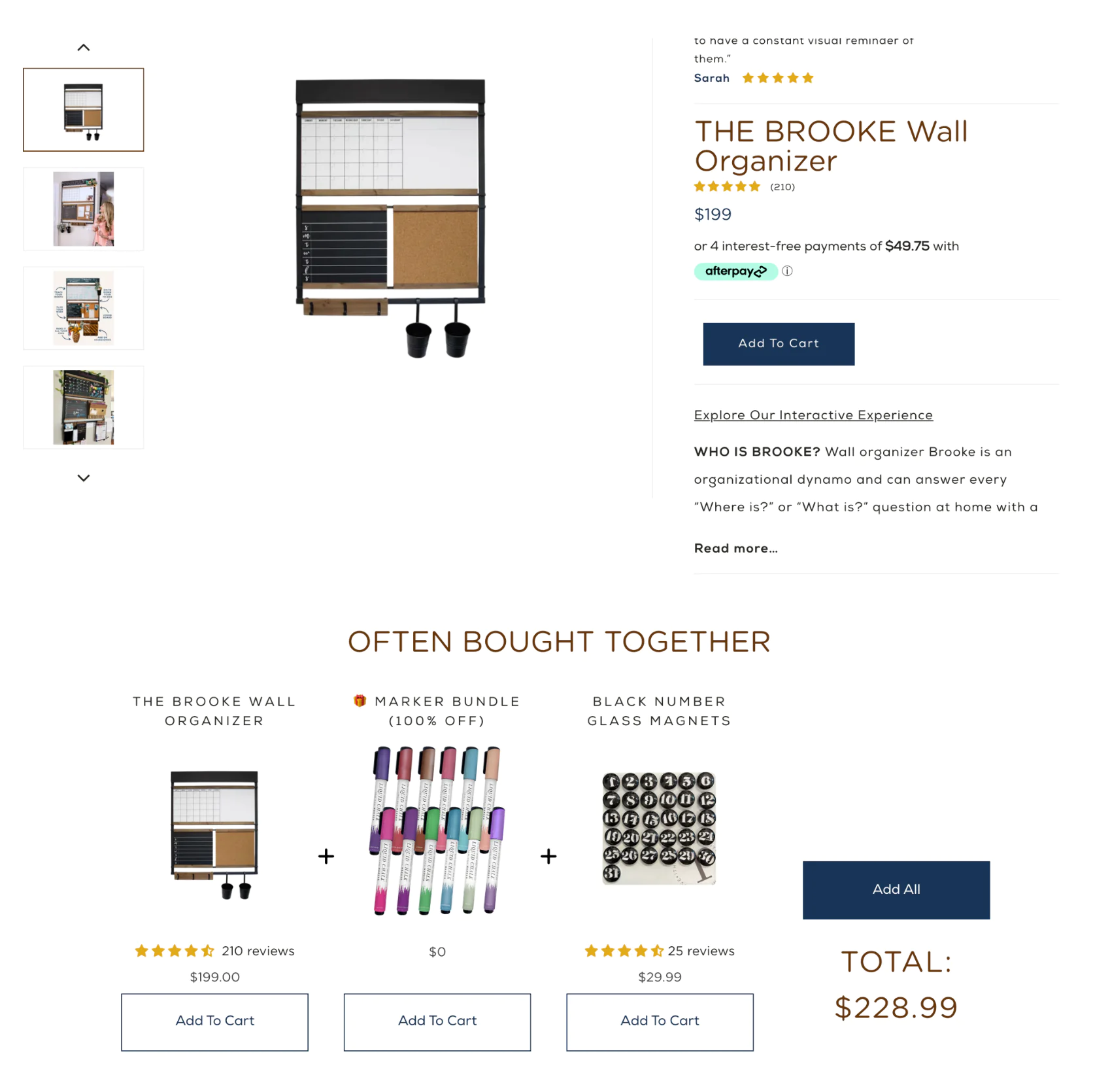Discover how AI-driven product bundling can boost average order value, increase conversions, and help move slow-selling inventory—all while saving you time. Learn the essentials of dynamic bundling, from setup to continuous optimization.
March 4, 2025
How to Increase Revenue with Dynamic Product Bundles
Picture this: a customer walks into a store looking for a jacket, but a sales associate convinces them to leave with a complete outfit. That’s the power of product bundling in e-commerce. By grouping complementary products together, you make it easier for shoppers to buy more in a single purchase.
Dynamic product bundles take this idea to the next level. Instead of manually curating sets, these bundles use data and algorithms, to automatically create personalized product combinations in real time. The result? Higher conversion rates, bigger average order values, and even a way to move slow-selling inventory—all with minimal manual effort. In this article, we’ll cover:
- What dynamic product bundles are and how they differ from manual bundling
What Are Dynamic Product Bundles
In e-commerce, a product bundle is a set of complementary items presented together—often at a combined price or discount. Bundling simplifies the shopping experience by showing customers items that naturally go together, increasing the chances of a larger purchase.

Our client Flag Shirt, an American Flag apparel brand, offers customers a choice between just the shirt they’re viewing and a complete pre-styled outfit
Dynamic product bundles are an AI-driven evolution of this concept. Instead of manually selecting a fixed group of products, dynamic bundles use real-time data and rules to create the best product combinations automatically. The system analyzes inventory, product relationships, and past purchase patterns to suggest relevant bundles based on the item a customer is viewing.
This doesn’t mean personalization based on user behavior—instead, it focuses on which products pair well with the item currently being viewed. The system automatically identifies complementary products that other customers typically purchase alongside the viewed item.
Why dynamic bundling beats manual bundling:
- Improves Personalization: Shoppers see up-to-date, data-driven suggestions that showcase what others are buying together or how they’re styling products
- Saves Time: No need to manually update bundles when stock changes
- Scales Without Endless Upkeep: As your catalog grows, the system continuously optimize bundle performance with minimal manual intervention
Why Bundles Work for Business
Bundles increase the value of each purchase and drive revenue growth through key metrics:
- Higher Conversion Rate: Pre-assembled bundles help customers make faster decisions by reducing the need to build their cart item by item. Well-curated bundles also reinforce your expertise, building trust and encouraging purchases
- Increased Average Order Value: Customers see more value in complementary products and often spend more than planned. Bundles also create a perception of better value through combined pricing
- Cross-Category Adoption: Featuring different product types in a bundle encourages customers to explore categories they might not have otherwise considered
- Slow-Moving Inventory Sales: Combining popular items with slower-moving products helps optimize stock levels and drive more sales
How to Start with Bundles
The key to a successful bundling strategy is to start simple, stay true to your brand, and use data to refine your approach over time. Here’s how to get started:
1. Start Simple with Complementary Categories
Begin by bundling products from categories that are frequently purchased together. Use your “often bought with” data—excluding the currently viewed item—to identify natural pairings. For example, tops with bottoms in apparel, laptops with cases in electronics, or coffee makers with filters in home goods. These combinations feel intuitive to shoppers and encourage larger purchases.
Avoid overcomplicating bundle rules at first. Instead, let the algorithm experiment within broad categories. This flexibility allows the system to learn what works best without excessive manual setup.

Decorative wall organizer shop 1Thrive creates bundles using a simple formula: a wall organizer paired with their most purchased complementary accessories
2. Align Bundles with Your Brand Aesthetic Once your dynamic bundle algorithm is generating relevant product combinations, focus on presentation. The way bundles are displayed should be visually consistent with your brand and create a seamless shopping experience.
Use a template and layout that aligns with your store’s design. A well-designed bundle display should:
- Match your site’s overall aesthetic
- Clearly communicate the value of the bundle, whether it’s convenience, savings, or inspiration
- Make it easy to interact with multiple products at once
Make your bundle design both attractive and easy to use. Allow customers to add an entire bundle or individual items with a single click. For products with multiple options—such as colors or sizes—let customers make their selections directly within the bundle. Simplifying the buying process reduces friction and encourages more conversions.
While the algorithm will handle most of the product pairing automatically, you may want to fine-tune certain brand guidelines. For example, you might set rules to ensure premium products are only bundled with other high-end items. These refinements are optional—the real power of dynamic bundling comes from letting the data drive most decisions while you focus on optimizing the shopping experience.

Flag Shirt, an American Flag apparel brand, allows customers to select their size directly within the bundle widget
3. Commit to Continuous Testing and Refinement
You can launch dynamic bundles and let AI optimize them over time. But for the best results, actively measuring performance and making adjustments will help you maximize their impact.
Use A/B testing: Experiment with different bundle rules, layouts and placements. Test whether bundles perform better on product pages, in carts, or as pop-ups. Compare offering small discounts versus no discounts to see what drives more conversions.
Track multiple metrics: Look beyond sales and conversion rates. Monitor engagement signals like how often customers click on bundles, time spent viewing them, and post-purchase feedback.
Refine your approach: Instead of focusing on individual products, optimize the rules that create consistently successful pairings. As patterns emerge, develop specialized bundle rules for different product categories, customer segments, or seasonal trends.
Create a learning loop where the customer behavior continuously informs and improves your bundling logic.
Frequently Asked Questions About Dynamic Bundles
What’s the difference between dynamic and manual bundles?
Manual bundles are fixed product sets you create yourself, like a pre-made gift basket. They remain the same until manually updated, which can be time-consuming.
Dynamic bundles, on the other hand, are automatically generated by algorithms using real-time data. They focus on product relationships—identifying which items naturally pair well based on what shoppers frequently buy together. This makes dynamic bundling more scalable, relevant, and typically more effective than manual bundling.
What’s the difference between bundles and “Frequently Bought Together” recommendations?
“Frequently Bought Together” suggestions recommend items commonly purchased alongside a product based on historical data. While useful for cross-selling, they focus on historical data rather than creating a curated shopping experience. Bundles take a broader approach, often spanning multiple categories to create a complete set, outfit, or solution.
Should I offer a discount on my product bundles?
A small incentive (5-15% off) is a common practice, but it’s not required. Discounts highlight value and encourage customers to purchase the entire set. However, bundles can succeed without them—especially when they emphasize convenience—like a travel kit with all the essentials.
Tip: Even if a bundle isn’t discounted, displaying savings by showing the combined list price with a strikethrough next to the final price reinforces the perception of savings.
Alternatives include non-monetary incentives such as free shipping or bonus gifts. Always consider profit margins before applying discounts, and test both discounted and full-price bundles to see what works best for your customers and business.

Decorative wall organizer shop 1Thrive includes gifts in its bundles
Can customers customize or remove items in a dynamic bundle?
Yes, a well-designed dynamic bundle system allows customers to:
- Select variants (sizes, colors) for each item
- Remove items they don’t want
- Sometimes swap products for alternatives
Flexibility is key—forcing customers to take unwanted items leads to frustration. The best bundle interfaces include checkboxes or quantity selectors to let shoppers adjust their selection. Bundle suggestions should always be optional and customizable. When customers feel in control of their bundles, they’re more likely to complete the purchase.
Next Steps
Ready to boost your e-commerce revenue with dynamic bundling? Book a demo with Maestra today to see how our AI platform can optimize your store.
